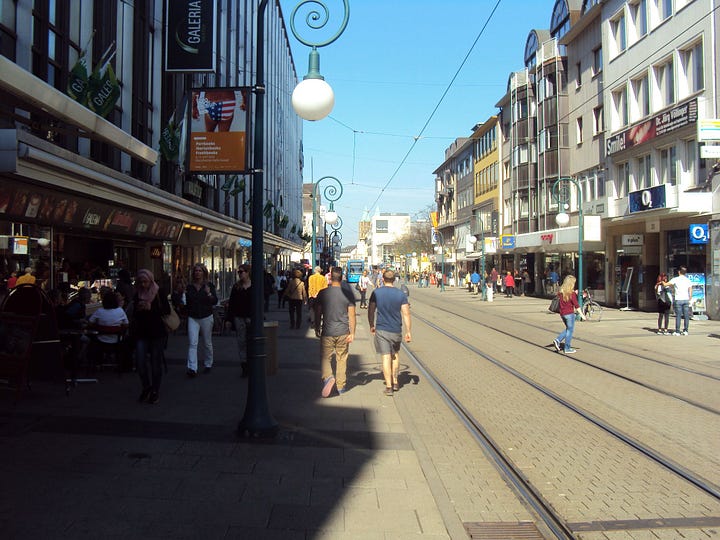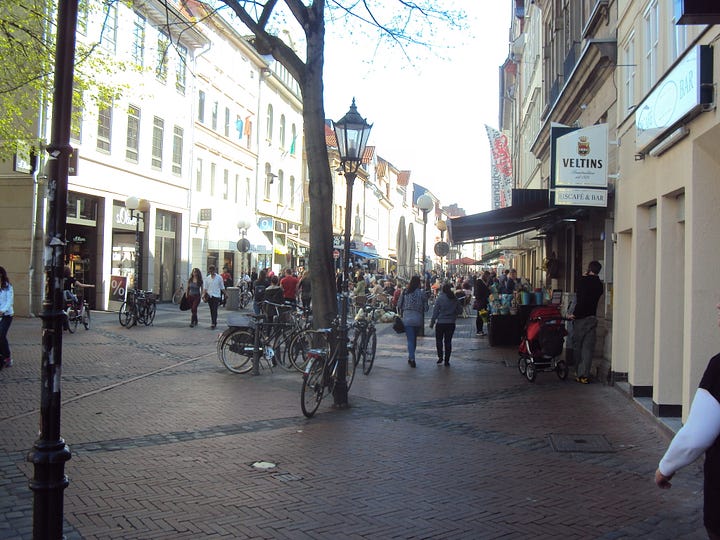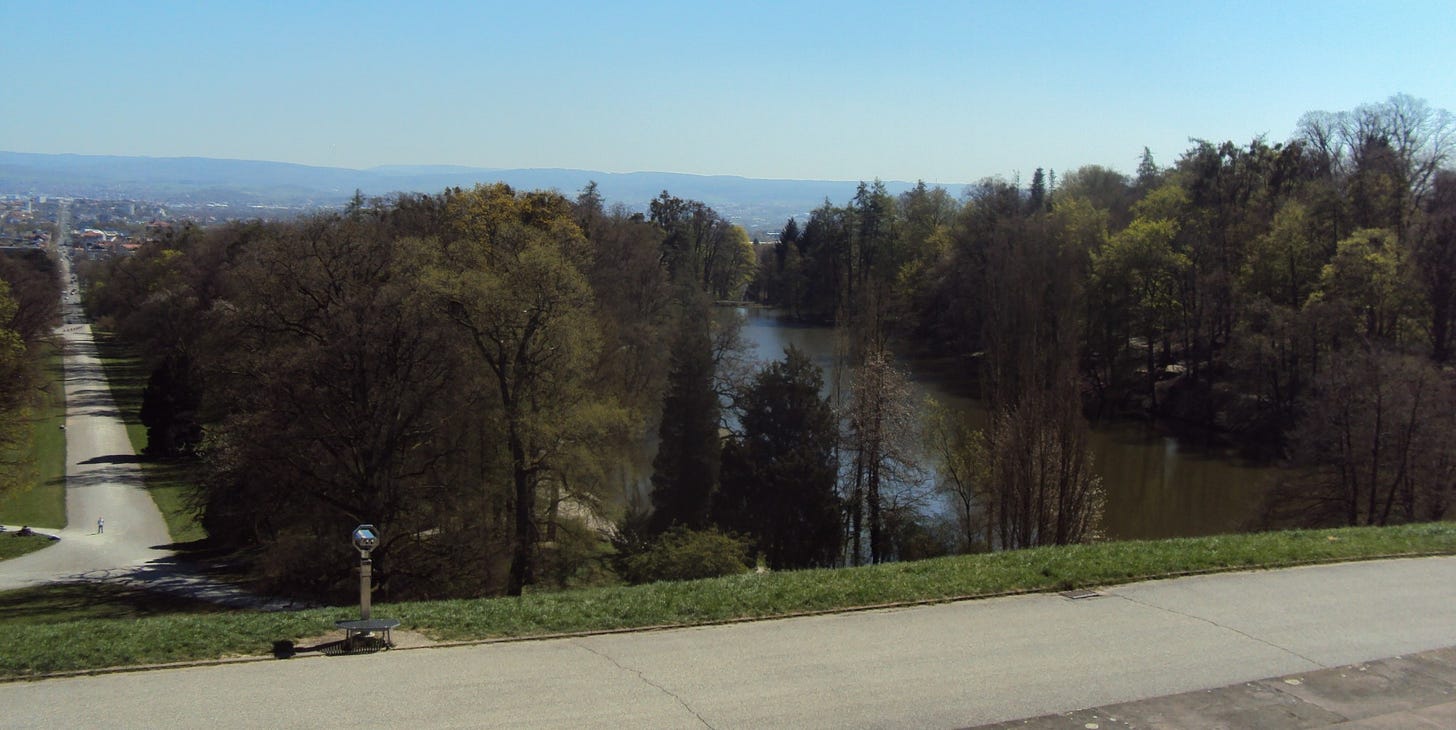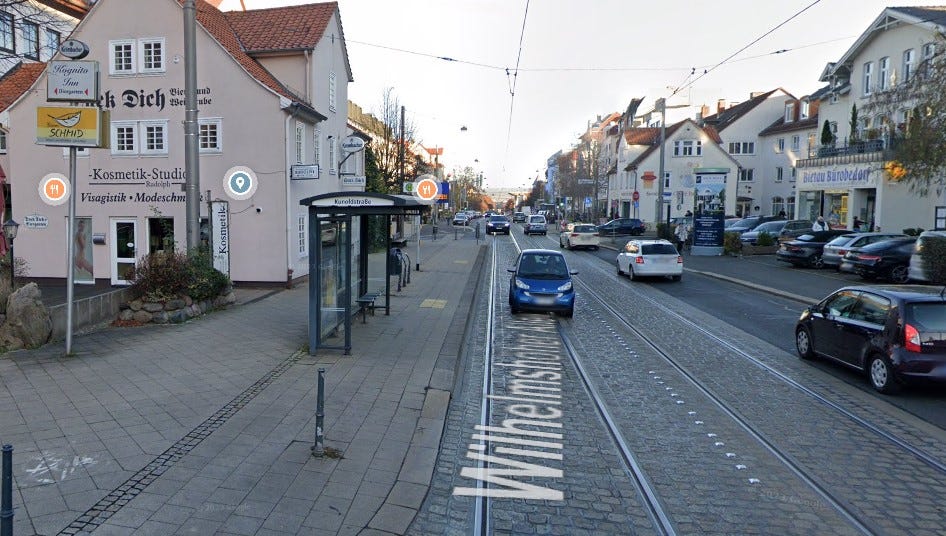Kassel my notes
The 107km2 city of Kassel DE has a population of 204,202 people, giving it a population density of 1,900 people per square km (ppkm2). Kirikiriroa / Hamilton has a population of 185,300 in a comparable area of 111km2 giving it a population density of 1,700 ppkm2. Like Hamilton, Kassel has great parks, the most magnificent being Wilhelmshoher Park with its 8.5m statue of Hercules overlooking the 350m-long Great Cascade, Wilheimshoher Allee and the city. Another is the Karlsaue radial park between the river Fulda and the city centre
Like all the Germany cities prior to WW2, Kassel was the most beautiful and in my opinion one of the more interestingly planned. It was unfortunately one of the most disappointing in the way it cared for its historical buildings. After a high percentage of the city was destroyed during WW2, the new rebuild plan was led by people linked to the German wartime government (p.18**). The rebuild started with the ‘unnecessary demolition of lightly damaged buildings’ to meet the designed “necessities of modern traffic” (p.5*) with ‘broad streets’ (p.118-119**). By the early 1950s the plan was seen as “Kassel’s second destruction” (p.120). In 1953 Kassel claimed to be the first to create a pedestrian street that barred automotive traffic (Treppenstrasse p.16*, p.120**). In the 1980s ‘Kassel became one of the first German cities to feature a vast network of bicycle paths’ (p.136). the 1990s a plan was started which ‘ entailed the reduction of the number of lanes in many streets; the introduction of speed limits of 30 km/h in all residential areas; the creation of various devices that would force drivers to slow down their vehicles; and the expansion of bicycle paths and tramway lines’ (p.143**). ‘These measures were unpopular’ (p.143**) so shortly after the 1993 local elections the new populist municipal mayor ‘rid the city of many of the devices meant to slow down traffic’ (p.143**). The outcome was ‘Man dies a few days after serious accident in Kassel ... [the driver] was unable to avoid a collision with the pedestrian’ (HNA 18/11/23 - Mann stirbt wenige Tage nach schwerem Unfall in Kassel)
*Kassel City Guide, Text by Michael Imhof
**The Demigod’s City, A Short History of Kassel, by Ralph P. Guntzel

For a week in 2015 I stayed in the town of Hann Munden, which is halfway between the cities of Kassel and Gottingen (pop. 118,946, area 117km2, density 1,016 ppkm2). Both the cities have a university population of about 24,000, but the vibe of the two cities is completely different. In the centre of Gottingen there is a high presence of bicycle traffic and younger people, basically because Gottingen has speed limits of 30 km/hr in residential areas; has various devices that force drivers to slow down their vehicles; and a expansion of improving bicycle paths, which make it easy to get to and ride through the Gottingen city centre.


What saves Kassel is its tram network. It has 7 tram routes, which all travel through the centre of Kassel, as Hamilton’s bus route used to when Victoria St’s pedestrian counts were at their highest. In Kassel the trams just spew people into the city centre. This keeps the pedestrian count high and provides a steady demand for retail space, but the prevalence of drunks did seem to be more noticeable in Kassel than in Gottingen. I put this down to the greater number of people biking through Gottingen city centre, which dilutes their visibility.


Something that did impress me was Wilheimshoher Allee, which is a straight, 4.5km-long road with ground floor mixed use and tram lines along its length. It is similar to Hamilton’s Grey street but much higher density.
Travel mode share: for travel to work in Kassel (Gottingen) [Deutschland] {Hamilton} – by car 46% (37%) [57%] {81%}, public transport 22% (13%) [10%] {2.8%}, Bike 19% (28%) [11%] {2.4%}, walk 12% (22%) [22%] {4.8%}. Travel for leisure in Kassel – by car 35%, bike & public transport 11%, by foot 42%.
Kassel numbers from - Cycling as a marginal phenomenon in Kassel
Gottingen [& Deutschland] mode of transport - Documents - Easily get around in Göttingen – information on mobility with environmentally friendly means of transport (brochure)(4MB)
For Hamilton 2018 census numbers to equal 100% we need to add work from home & others
To finish here are some quotes from a report on transport in Kassel : “We hear again and again about “turf wars” on the streets: drivers complain about cyclists, cyclists about large SUVs – and pedestrians about cargo cyclists. The relationship between road users seems tense. Space is limited ... the cycling structure must be expanded “without discriminating against cars and trucks”. It is particularly important to create a city "that is equally attractive for all types of transport." ... [a] test by the General German Bicycle Club (ADFC) [indicates that] ... Kassel has the worst rating among the major cities in Hesse. ... Those surveyed are particularly dissatisfied with the illegal parking controls on cycle paths, the width of the cycle paths and the guidance at construction sites. ... In the past, there was too much focus on a car-friendly city. “There is currently too one-sided focus on the bicycle as a means of transport,” ... "The only way forward can be to create a city that is equally attractive for all types of transport." ... The number of private and business cars has increased there over the past ten years ... In January 2022, there were almost 46 cars per 100 residents in Kassel; in 2012 the number was 42’.
End






